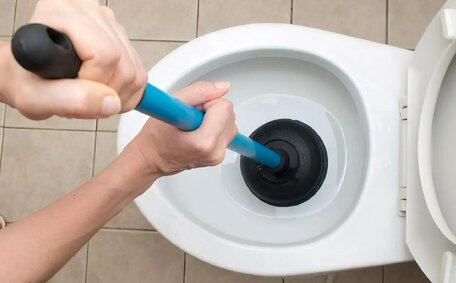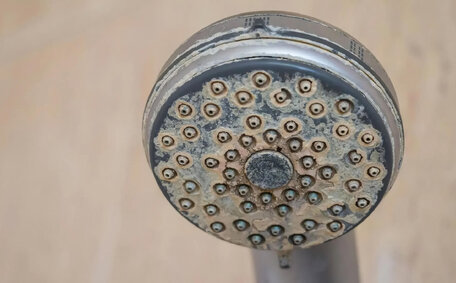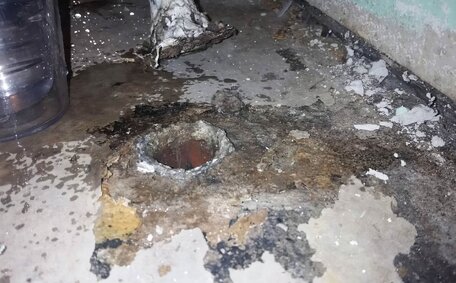Introduction to Relighting a Gas Water Heater Pilot Light
Access to hot water is often overlooked until an issue arises. A common issue many homeowners face is returning home to find they have no hot water, often caused by the pilot light on their gas water heater going out.
Relighting pilot lights is generally simple; however, following safety precautions is crucial. Correctly following the sequence and identifying underlying issues will ensure the efficient restoration of your hot water supply.
This guide provides step-by-step instructions on safely relighting the pilot on your gas water heater. This guide outlines the equipment required, hazards to avoid, accessing crucial components, following manufacturer instructions and testing that the relit pilot is functioning effectively.
When Should You Relight the Pilot?
There are a few key signs indicating when you need to relight your gas water heater’s pilot light:
- You have no hot water at all
- Your hot water supply is lukewarm at best
- The pilot light is visibly out when you remove the access panel
- Your water heater makes odd sounds like hissing when turned on
If your hot water supply is interrupted, a extinguished pilot light is often to blame. Some modern gas water heaters have an indicator light demonstrating how relight procedures may be required when the pilot is out, but not all models have this feature.
Common reasons for a pilot light to go out unexpectedly include:
- Strong drafts of cold air extinguishing the flame
- Dust build-up interfering with the flame
- The gas valve or thermocouple failing
Instead of figuring out how to relight the pilot, check for gas leaks first if you smell gas or if the pilot goes out repeatedly. This may indicate an underlying issue needing professional attention to prevent risks.
Generally, the process of relighting the pilot on a gas water heater is straightforward. Just be sure to carefully follow the manufacturer’s instructions for your specific model.
Safety Precautions Before Relighting
When relighting a gas water heater pilot, safety should always be the number one priority. Rushing through the process risks fires, explosions or exposure to gas leaks.
Before doing anything else, check if you can smell gas near the appliance and look for signs of leaks around pipe connections. If the pilot light has gone out unexpectedly or repeatedly, call a professional to inspect for issues.
Confirm there are no leaks and remove all ignition sources before relighting. Remove anything flammable and don’t relight if there’s risk of triggering flames or sparks nearby.
Wear safety glasses and gloves to protect against sudden flames when accessing the pilot. As gas is toxic, ensure the area is well-ventilated before relighting.
Read your owner’s manual thoroughly to understand the relighting process before beginning. Never improvise steps as incorrectly relighting risks safety.
Locating the Pilot Light Assembly
To locate the pilot light, you’ll need to access the inner assembly where it’s positioned. Most standard gas water heaters have a removable panel allowing internal access.
Consult your owner’s manual to locate this panel on your model and instructions for safe removal. There may be screws, clips or other fasteners securing the panel in place.
In most heaters, the pilot light assembly with the igniter and flame sensor is towards the base of the inner tank. It’s connected via a gas supply line to the gas control valve and knobs on the outer shell.
Being extremely careful of hot surfaces, use a flashlight to look inside and locate the pilot assembly after removing the access panel. You may see the small tube carrying gas to the pilot nozzle. The flame itself will be absent since it’s gone out.
Knowing the precise location of the assembly before attempting to relight prevents confusion and allows you to target the ignition point directly. Pay close attention to manufacturer outlines so you know what to look for.
Understanding Pilot Light Components
The pilot light assembly consists of a few key components working in unison to produce the small igniting flame heating your water supply:
- The pilot nozzle or burner - This narrow opening allows gas to flow through which is then lit by the igniter to create the pilot light.
- Igniter - The mechanism used to initially light the gas escaping from the pilot nozzle when you attempt to relight the pilot. This is either a manual push-button igniter or an electronic igniter.
- Thermocouple - This device sits very near the pilot flame and generates a small electrical signal when warmed, telling the gas control valve that the pilot is lit.
- Gas control valve and knob - Regulates the gas flow and turns it on or off. This must be switched to the correct pilot position when relighting.
Understanding the function of these components helps you target the pilot accurately and resume heating water once a steady flame is established.
Consult the diagram in your manual that illustrates the relighting process in accordance with your water heater’s layout if any part is unclear. Or contact a gas fitter for assistance identifying components before proceeding if needed.
Step-by-Step Instructions to Relight the Pilot
Once all safety precautions are addressed and you’re familiar with the pilot assembly of your hot water heater, learn how relight the dormant pilot flame with these key steps:
- Turn the gas control knob/valve counterclockwise to the ‘Off’ position. This cuts off the gas supply to the pilot nozzle.
- Wait 10 minutes to ensure any remaining gas or fumes around the unit dissipate.
- Turn the gas control knob to ‘Pilot’ or a position between ‘Off’ and ‘On’. This allows a small amount of gas to reach the pilot when lighting.
- Push down the igniter button continuously if electronic, or depress the manual igniter firmly while holding the knob in ‘Pilot’. You should hear gas escaping.
- While keeping the igniter engaged, look for an orange flame to emerge around the pilot burner. Hold the igniter an additional 10-15 seconds once lit before releasing.
- If the flame goes out shortly after removing the igniter, repeat immediately. The thermocouple may need more heat input time to hold the valve open.
- If the flame remains lit move gas control knob to the full ‘On’ position to resume heating water. Verify normal burner ignition and temperature settings.
- Allow 30 minutes for the water to heat up before use. Check for leaks throughout initial operation.
If understanding how relight the pilot fails despite multiple attempts, this indicates an underlying issue requiring professional assessment. Contact a licenced gas fitter for appropriate diagnosis and repairs.
Turning Off the Gas and Waiting
The first crucial step when looking to light your gas water heater’s pilot is to ensure the gas supply is completely off. This involves rotating the gas control knob or valve to the 'Off’ position. This cuts off the flow of gas to the pilot light assembly.
It’s crucial to wait 10 minutes before continuing with the relighting procedure. Gas that has leaked out is both toxic and extremely flammable.
Allowing the gas to clear reduces ignition risks and prevents inhaling toxic fumes.
Never attempt the process of how relight the pilot flame until you’ve turned off the gas and waited an adequate amount of time. Rushing ahead risks uncontrolled gas ignition endangering yourself and your home.
Setting the Gas Control to Pilot
The next step after waiting for any residual gas to dissipate is setting the gas control knob or valve to the ‘Pilot’ position. On some models this may be labelled ‘Pilot/Ign’.
Turn the control knob counterclockwise to this place between the ‘Off’ and ‘On’ settings. This will allow a small amount of gas to reach the pilot light assembly while keeping the main burner off.
Maintain this position for at least 30 seconds before lighting the pilot flame. This ensures enough gas flows through for ignition. Do not hold for more than 60-90 seconds without lighting as gas may pool and ignite unexpectedly.
While holding the knob in ‘Pilot’, activate the igniter by pressing the electronic button or manually operating the piezo igniter as part of the relighting steps. The objective is to light pilot gas as it emerges from the nozzle, while ensuring the valve is appropriately positioned.
Once the pilot flame successfully ignites, continue holding the knob down for 15-30 seconds prior to releasing to allow the thermocouple to heat up and register the pilot as lit.
Lighting the Pilot Flame
With the gas control valve set to the 'Pilot’ position, you can now ignite the pilot flame. Refer to your water heater’s manual to determine if you have a manual or electronic ignition system.
For manual ignition, locate a button labelled 'Push to Ignite’, 'Piezo’, or a similar prompt. Keep clicking until you see a flame emerge from the pilot burner.
For electronic ignition, you will see a button labelled 'Igniter’ or 'Sparker’ instead of a manual button. Press and hold this button down while holding the gas control in 'Pilot’.
You will probably hear a buzzing noise. Continue holding the igniter down until a flame ignites from the pilot.
After the pilot lights, keep the igniter engaged for 30 seconds to fully heat the thermocouple. The pilot flame must remain steady after releasing the igniter. If not, repeat the ignition process until the flame stays lit with just the gas valve in 'Pilot’.
Verifying the Pilot is Lit
After successfully igniting the pilot flame and keeping it lit for at least 60 seconds, you need to verify it is burning properly before proceeding.
Ensure the pilot flame is consistent and blue after releasing the igniter. An unstable or yellow/orange flame may indicate a problem with gas flow or component faults.
You can also check for warmth near the thermocouple. If no heat is sensed, the flame pattern is abnormal or the flame goes out, contact a professional for assessment.
If the relit pilot looks normal upon visual inspection, turn the gas control knob fully counterclockwise to the 'On’ position. This will allow gas to flow enabling the burner to ignite and start reheating water.
Ensure the main burner ignites smoothly upon selecting 'On’. Run the heater for 20-30 minutes, checking for leaks or unusual sounds during initial operation before using the hot water.
Common Issues and Troubleshooting
Some common issues that can occur when trying to relight your gas water heater’s pilot light include:
- The pilot flame ignites but goes back out after releasing the igniter button. This typically means the thermocouple needs more time to heat up and hold the gas valve open. Try holding the igniter down for 60-90 seconds after the pilot initially lights.
- The pilot won’t stay lit no matter how long the igniter is held down. This suggests a problem with gas flow or the thermocouple. A professional will need to diagnose and replace any faulty parts.
- The pilot lights but the main burner doesn’t ignite when turning the gas control knob to ‘On’. This may be due to clogged tubes or orifices that need cleaning.
- You smell gas or the pilot frequently goes out on its own. Get a qualified gas fitter to inspect for leaks and assess if components like the gas valve or thermocouple need replacing.
Repeated pilot light issues or the inability to relight the pilot indicate a fault that requires professional attention. Attempting to force the ignition process can risk gas leaks, fire hazards, or exposure to toxic fumes.
Gas fitters can accurately diagnose any underlying reasons for a problematic pilot light and rectify issues promptly. This avoids ongoing loss of hot water and potential dangers.
When to Call a Professional
While often a simple DIY task, certain situations warrant calling a professional to relight your gas water heater’s pilot light:
- You smell gas or suspect a leak
- The pilot light repeatedly goes out
- You are unable to successfully relight the pilot flame after several attempts
- The relit pilot keeps extinguishing shortly after
- The main burner fails to ignite with the gas control on
- There are odd sounds, fluctuating water temperatures or other abnormal operations
Our qualified gas fitters at Emu Plains Plumbing can quickly diagnose and address your pilot light issues. We troubleshoot problems and identify any necessary repairs to get your hot water flowing reliably again.
For expert help with your water heater pilot, reach out to us on 1300 349 338 or at [email protected].






